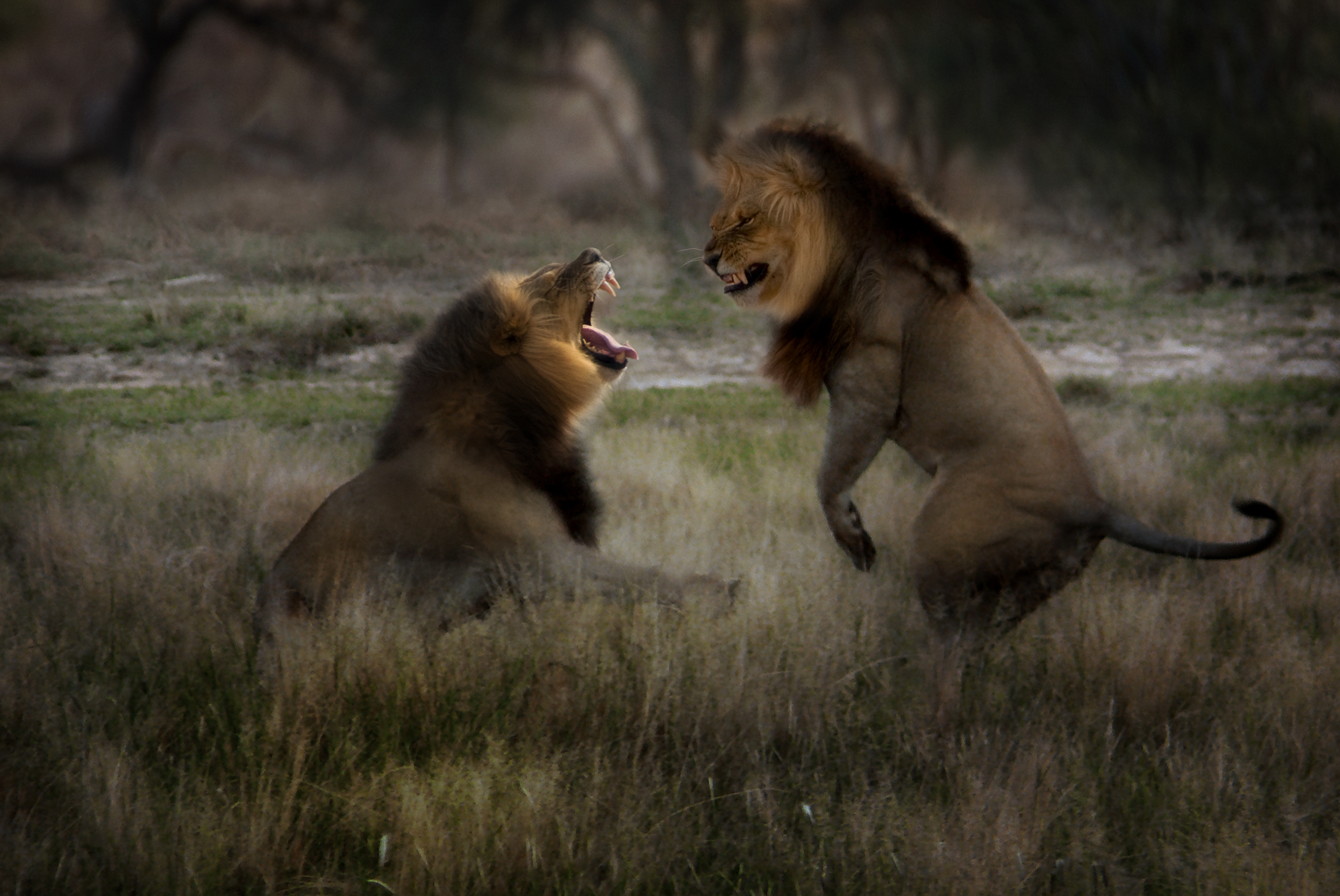Camping and self-driving in Africa’s national parks is one of the best ways to get to know the rhythm of the ecosystem. Each park on the safari circuit from South Africa to Kenya is different and unique in some way. What they mostly do have in common are the predators. Africa’s big cats stand at the top of the feeding chain, and if it’s a park that doesn’t have cats, it more than likely has hyenas that are not only scavengers but also formidable hunters.
The camps and campsites in most Big Five parks in South Africa are fenced, as is the more popular Etosha National Park in Namibia. However, most public campsites around Africa are unfenced, meaning wildlife can pass through the campsites freely. That’s not to say that no creatures get through the enclosed camps—civets, genets, badgers, porcupines, baboons, monkeys, warthogs, and jackals might cause mischief and steal something off the braai or barbeque if you’re not vigilant. Many camps occasionally have a resident leopard who can scale fences or jump in from the trees. For this reason, walking around after dark requires caution, even in fenced areas.
Camping in unfenced areas is an adrenaline-fueled adventure because anything can happen, which is the beauty and privilege of it. Staying in a lodge takes that sense of being ground level with the wilderness away—there is nothing like hearing a lion roaring close to you or the rumble of an elephant. You’re on your own when it comes to indemnity, and it’s up to you to implement precautions. Although relatively rare, attacks do happen, and this narrative is not meant to sensationalize the occurrences but rather to inform. Many incidents have taken place with seasoned campers who knew the parks well and were accustomed to predators moving through sites, reminders that interactions with wildlife can be unpredictable, regardless of safety measures taken.
The one common thread of predator attacks on campers is that they happen after dark. Lions, leopards, and hyenas are opportunistic hunters, meaning they will take whatever comes their way, including humans, who are slow fast-food, if you will. We are disadvantaged in seeing, hearing, and smelling at night, whereas predators enter their element as the sun goes down. The words of a ranger have always remained with me. “The lion you come across in the day is a different lion at night, a Jekyll and Hyde.”
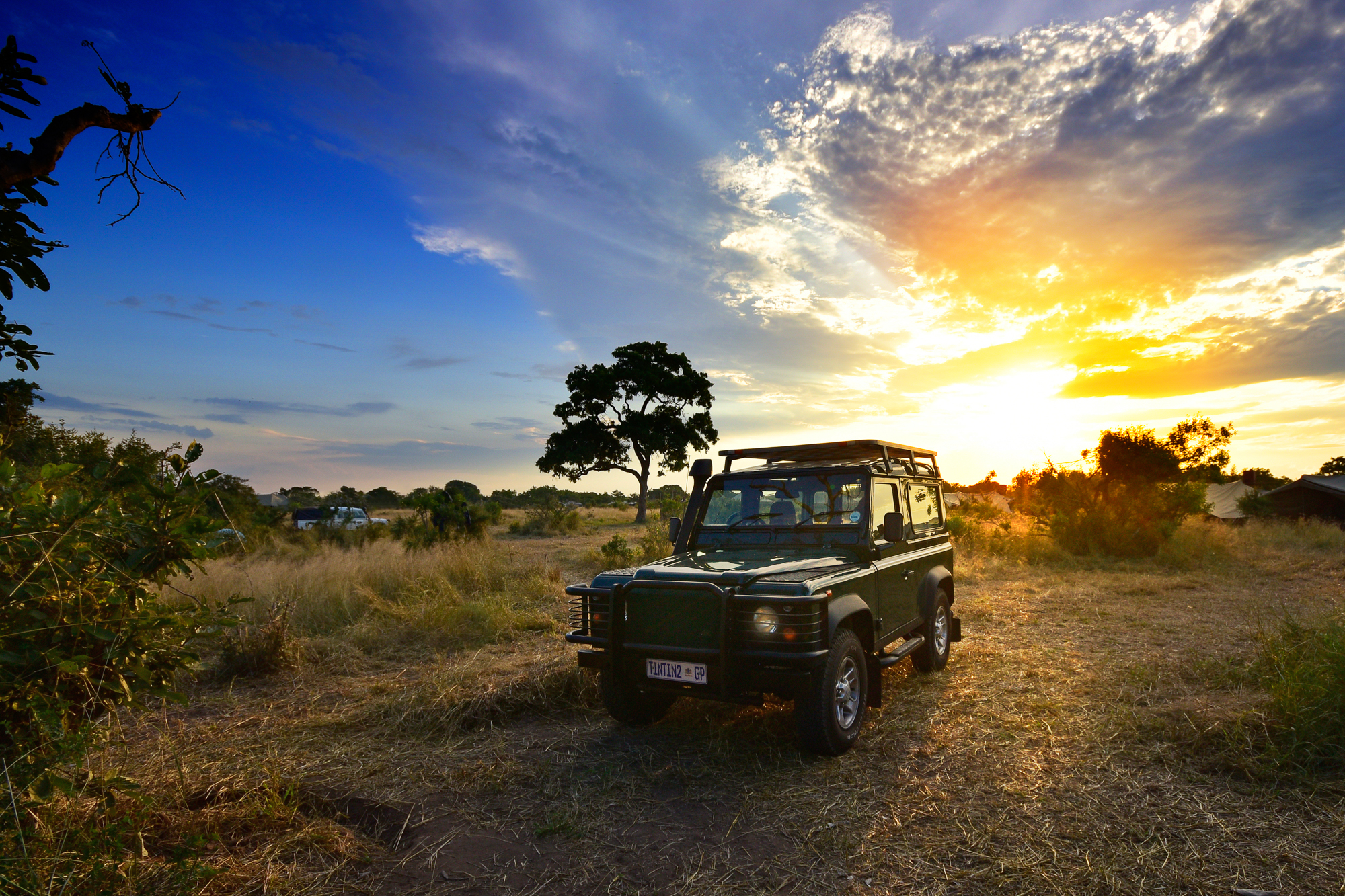
As the sun goes down, the nocturnal animals spring into life and either move through the camps silently or announce their arrival.
Be Prepared
Some years ago, three uni students from overseas traveling in Africa had booked a campsite in Moremi, Botswana. They had sleeping bags and food for a few nights under the stars. An acquaintance of mine camping nearby decided to check on them the following morning as there had been lots of activity during the night, with elephants passing through, hyenas whooping, and lions roaring. He couldn’t recall seeing any tents—was that even possible? Three bleary-eyed chaps greeted him while getting ready to leave. They had stayed up, sitting back-to-back with firesticks and torches [flashlights] as lions and hyenas appeared out of the darkness all night. No one at the entrance gate had considered asking them if they had tents, the natural assumption being that they would.
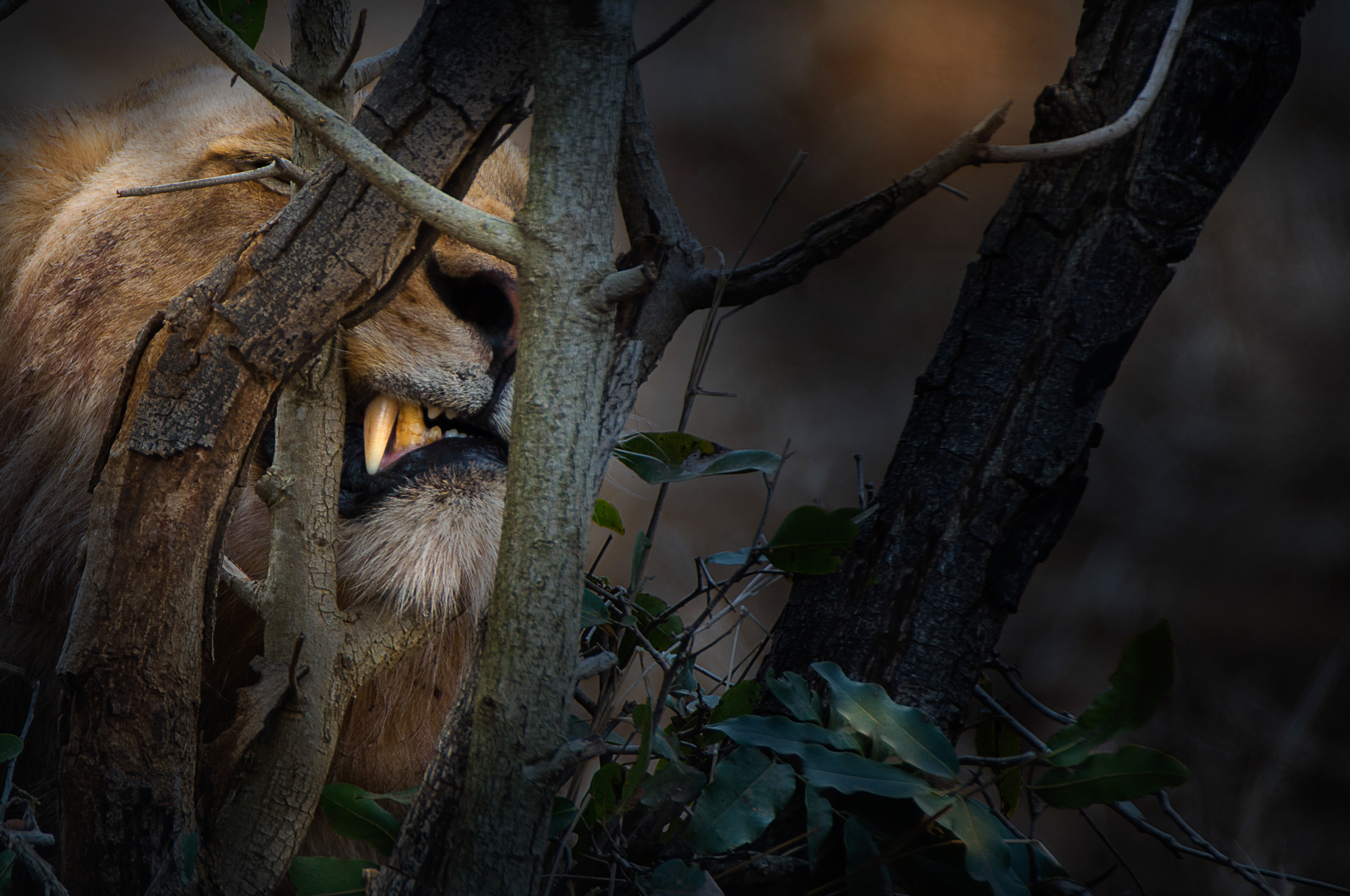
Predators are experts in camouflage and are used to stalking prey—their coats blend perfectly with the African bush.
Expect the Unexpected
My friend Ian, a seasoned camper and traveler throughout Africa, knows Moremi well and has introduced many groups to the area. An elephant came into camp one night after everyone had retired for the evening. After sniffing a couple of the tents, he must have spotted food in the back of Ian’s vehicle; Ian woke up with the sounds and tried to distract the animal, knowing what was about to happen—but it was futile. The elephant drove his tusk through the window and easily overturned the Prado. The incident was unusual, but the park officials said the same elephant had overthrown a trailer at another site a week before. Unfortunately, it had become too familiar with coming into the camps and was euthanized later. On a different note, with full marks for the Prado after being pushed upright again, Ian still drove it around and back to South Africa, albeit with a smashed window.
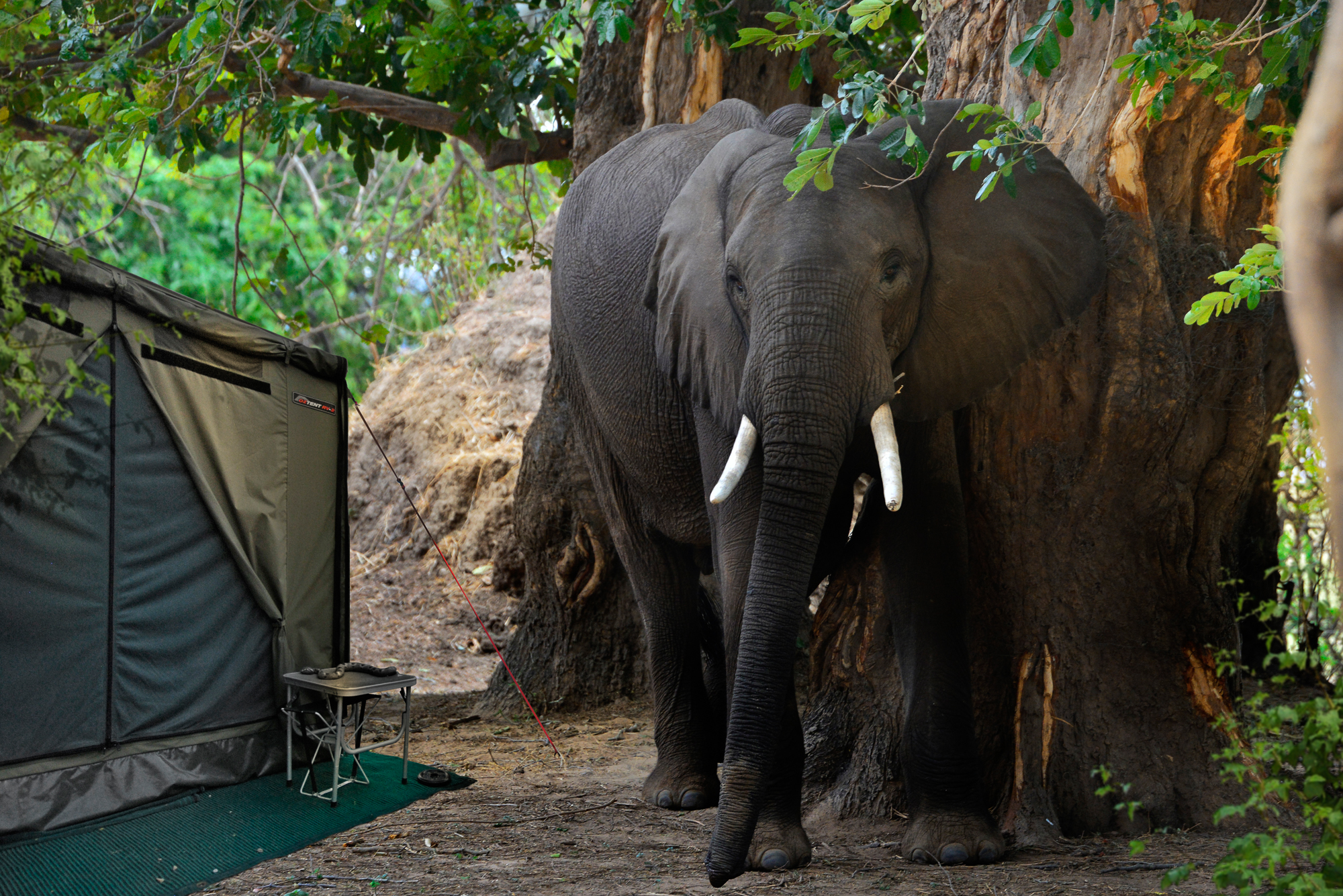
As colossal as elephants are, they can be surprisingly quiet and nimble when walking through a camp, even stepping over tent ropes carefully.
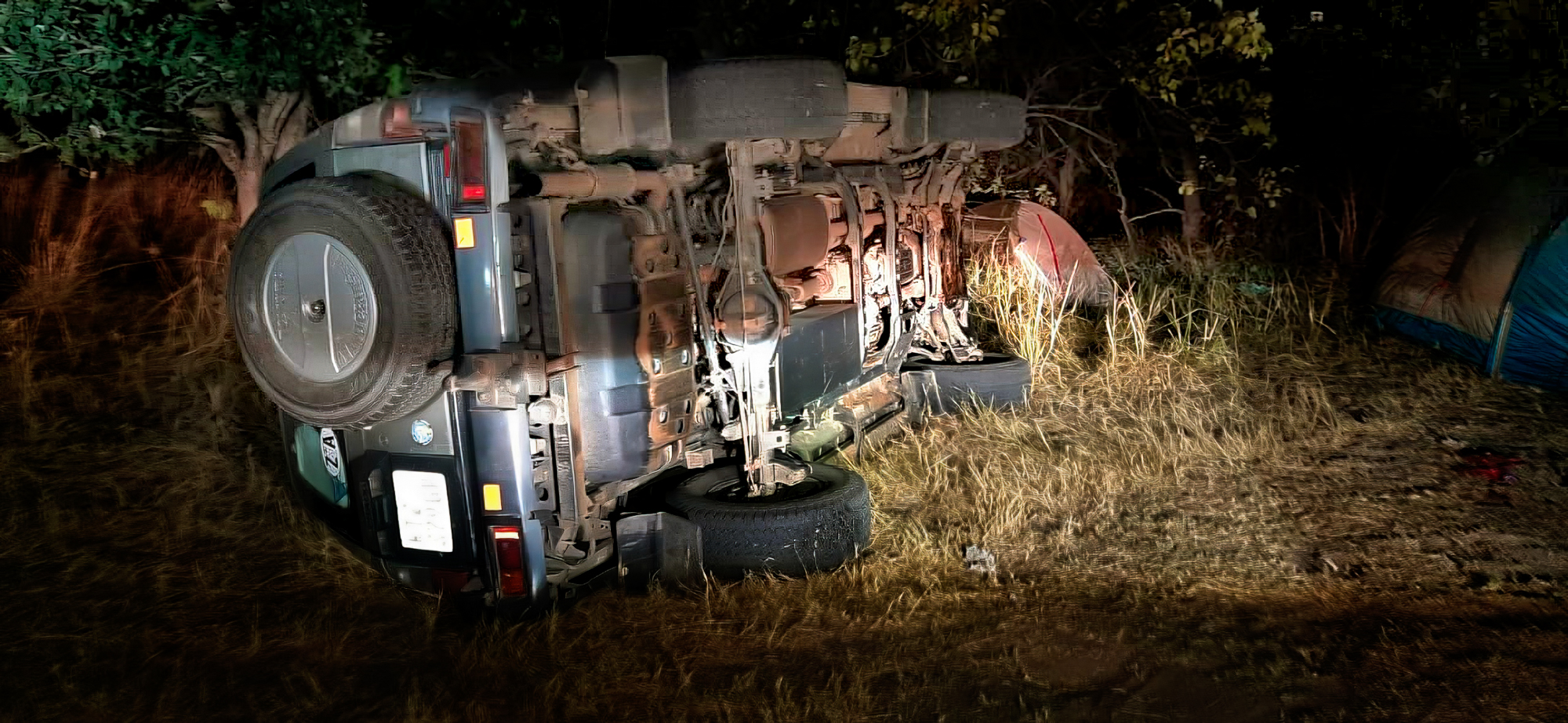
Ian’s Prado becomes a Dinky Toy against the immense strength of an elephant with the intent of getting to food.
Keep a Safe Distance From Wildlife
Although we focus on predators here, elephants are also worth talking about. Game vehicles are filling social media with images and videos taken too close to elephants—more often than not by the safari guides from lodges in the parks. The videos go viral, and the comments are a mixture of “How lucky you are” or “Hope we have an encounter like that on our safari.” Lucky, yes. In a second, things can change with tragic consequences. By nature, elephants don’t attack without provocation. They are a highly sociable species, but game-driving protocol demands a respectful distance and not getting into their space. A matriarch with a breeding herd will do anything to protect her charges. Both males and females have a temporal gland secretion at times, which indicates their physiological condition of excitement or distress. When the bulls go into musth (a period of aggressive behavior fueled by testosterone and driven by the rutting season), it’s a precarious time and even more reason to keep a safe distance. Hippos, buffalos, and rhinos can also be dangerous.
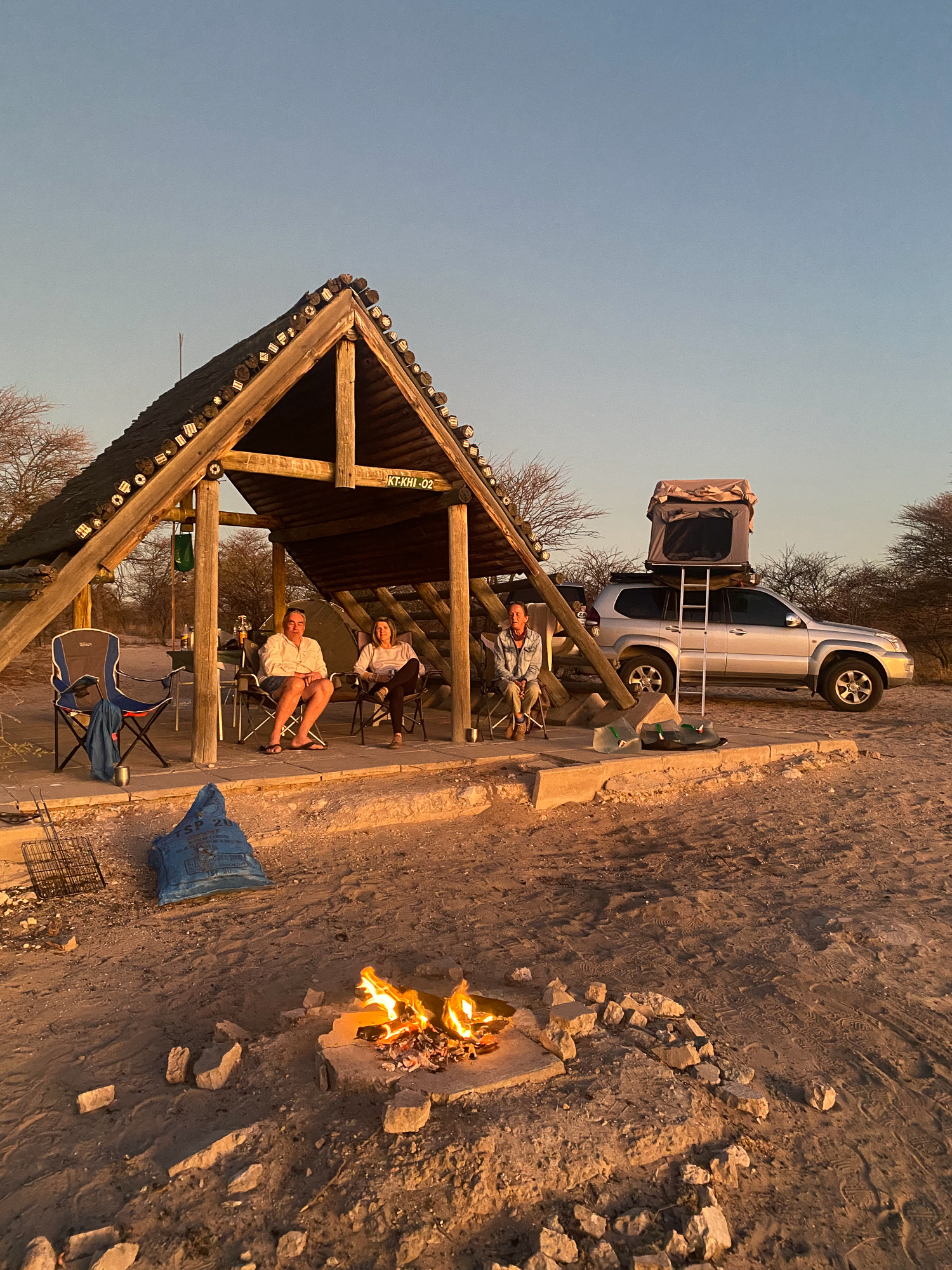
A-frame structures are pleasant for providing shade or erecting a tent, but sleeping under them is dangerous.
Stay Close to Camp and Limit Movement After Dark
Ablution facilities at unfenced campsites are generally rudimentary. Showers are simple structures without doors that can be a considerable distance from tent sites, or you can hang a camping shower bag nearby—the option I prefer. At Zimbabwe’s Mana Pools National Park in Chitake Springs, a gentleman went for a shower after dark and tragically lost his life from a lion attack. The late Steve Pope, a professional guide known by many in the Zambezi Valley, noted that a lioness and four sub-adult cubs were in the vicinity for most of the day.
Steve wrote, “We had watched the lions with buffalo [sic] in the morning and, as expected, found them resting on a grassy bank at the water’s edge. A herd of buffalo was making their way over the hill, and we stayed to photograph them in the sunset. We then left and drove past the Chitake 2 campsite to our camp at Chitake 3. At about 6.45 p.m., we heard the sound of vehicle horns blaring. I immediately realized that there was a lion problem, and within three minutes, we were at their camp with my weapons and spotlight.”
They found two vehicles parked on either side of the gentleman’s body to keep the lions away. Steve fired a round from his revolver into the air, which had minimal reaction, and he found the spotlight to be more effective. “There was no sign of aggression or of them stalking us. The lion seemed more interested in the shower, and one ran off with a towel while another investigated a bucket. Contributory factors that led to the incident were the somewhat far distance of the shower from the camp, the use of the shower in the darkness, the lack of a screen barrier, and insufficient lighting of the shower area.”
People who showered before sunset did not have any issues, despite lions being in the vicinity. The theory is that if lions see that you are aware of them, they’ll keep their distance. But, an experienced ranger I spoke to added it would be irresponsible to say that was a hard and fast rule.
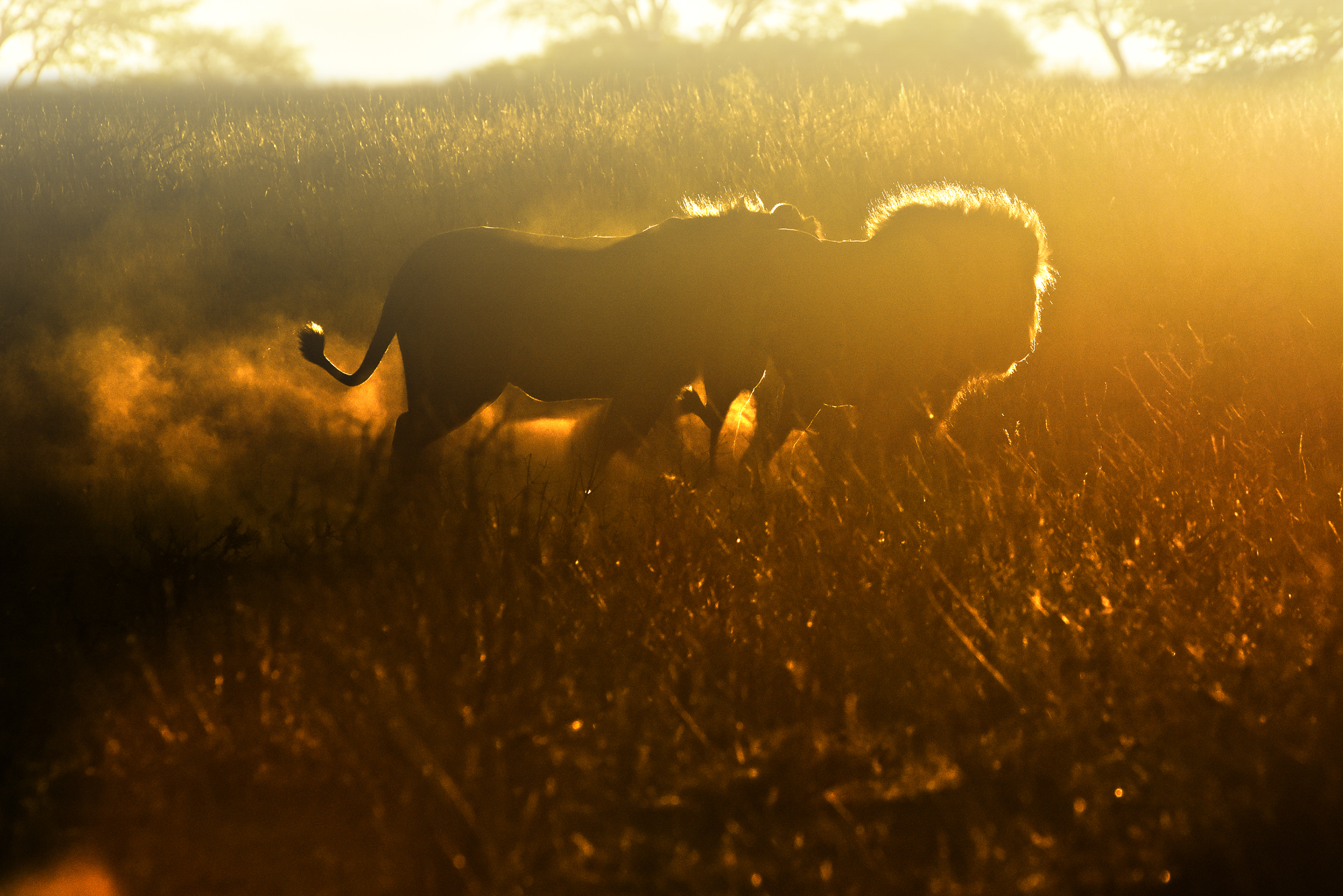
Lions often form coalitions between two to three; sometimes, over five males roam overlapping territories and control the lioness prides.
Choose Your Shelter Wisely
Sleeping out in the open or even under provided A-frame structures, popular in several park campsites, is unsafe, although I have, on occasion, put my tent underneath them in arid areas where the temperatures become scorching. Two years before I visited Matusadona National Park in Zimbabwe, a large group of guys from a club arrived in several boats on Lake Kariba at Tashinga Camp. They asked the wildlife manager if any problem animals were around (a term given to animals generally acting instinctively), and he assured them there was nothing to worry about.
The guys settled into the camp and received permission to build a big fire in the central area. Later, the boilers were lit, and everyone finished their showers early. After dinner, they slowly gravitated to bed with their bedpacks while the moon shone brightly. The A-frames slept four people in each, all within a 40-meter radius. In the early morning, after the moon had sulked away, a nearby elephant broke a tree, practically waking up the entire camp. After their sudden wake-up call, some men started chatting and listening to music, unaware that a lioness and her three adult cubs had come down the thick bush line barely meters from them.
One chap, still sleeping, felt a weight on his body. Thinking it was his dog getting onto his bed at home, he rolled over to push it away, only to have a lion close her mouth on his head. He shouted as she slammed and knocked his body against the frame. Unable to move freely, she dragged him out of the space, still holding his head in her mouth. Members of the group immediately rushed in with torches, shouting and screaming. Luckily, someone had an air horn, which added to the noise—she dropped the victim and retreated. Had they reached her sub-adult cubs a few meters away, the situation would not have ended so positively. Through the bravery of his companions, the man survived, and it was agreed to CASEVAC him at first light.
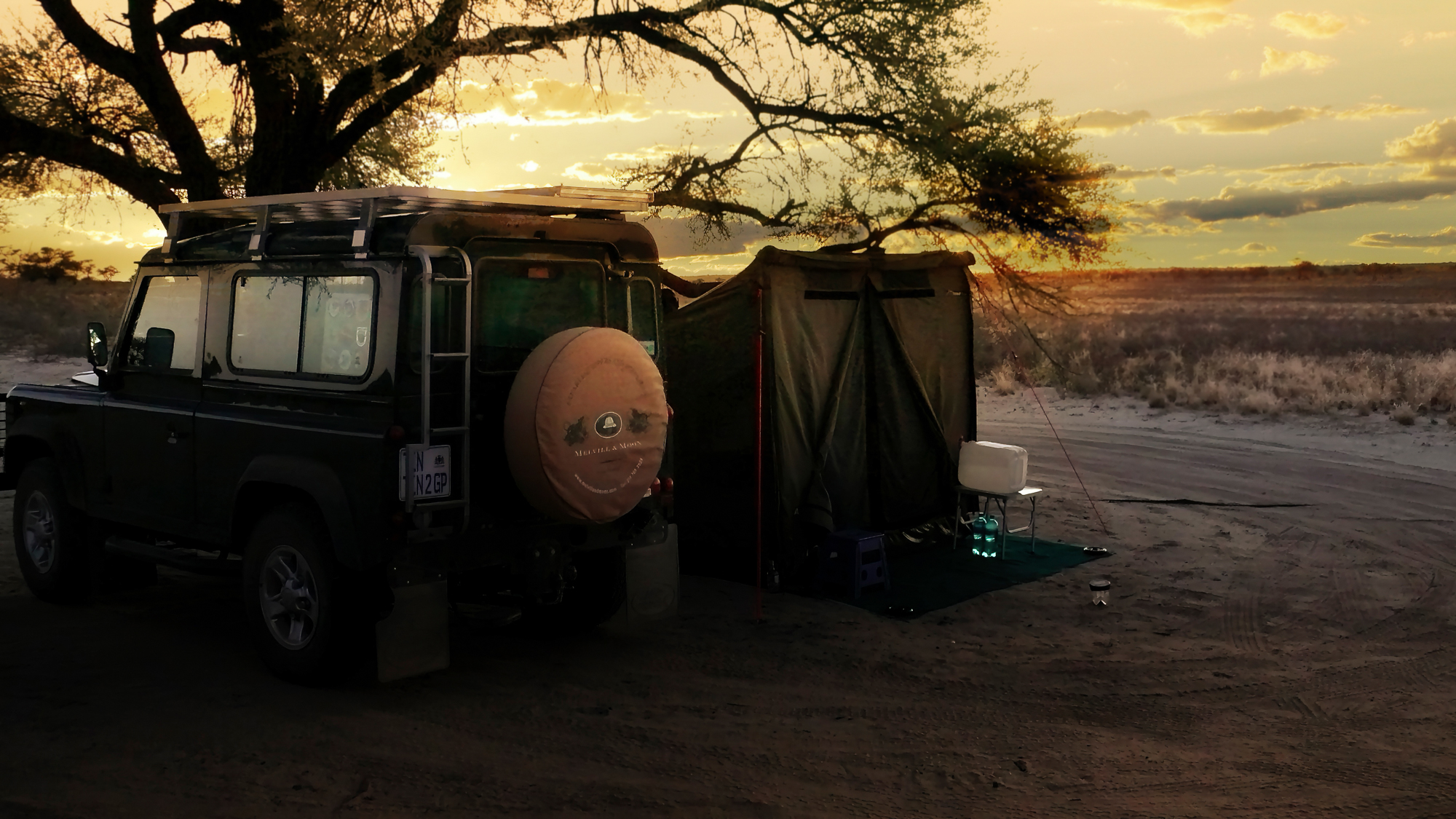
A strong tent and vehicle parked as close as possible is advisable—all outside water containers should be brought inside at night.
Anything Can Happen
This brings me to a recent bizarre incident in the Bosobogolo Camp along Mabuasehube in the Kgalagadi Transfrontier Park that stretches from South Africa into Botswana. A popular route is the Nossob-Bosobologo 4×4 access trail. Gavin Allderman, an experienced camper who had visited Mabua for many years, arrived with his partner, Jill Sheard, in early March 2024 for some blissful, relaxing days at Bosobogolo.
He wrote, “A glorious, spectacular sunset heralded another beautiful evening, with the barking geckos, jackals, and other night sounds wafting in the air. After a little braai, we packed up camp and secured all our equipment—we had heard lions in the distance the previous night.”
Jill had showered and was in the rooftop tent, and he was finishing up in the shower when he noticed an animal on their camp’s edge. In the low light, he thought it was a cheetah. He hurriedly secured motion sensor lights around the Toyota Hilux truck and clambered into the tent. With the gauze covering zipped up, they lay in bed reading, aware that the animal was circling, triggering the sensor lights. It had also crawled under the vehicle with only the tail visible. They soon realized it was not a cheetah but a gaunt-looking leopard and were thankful to be in the rooftop tent. They went to sleep, and about three hours later, Gavin jerked awake after hearing movement on the truck and peered down to see the leopard scrambling up the ladder, launching himself onto the gauze of the tent with his claws gripping the thin fabric.
“I started punching at it furiously in the face with all my might. I realized we were fighting for our lives. Both of us were shouting and screaming … Now and again, the animal pulled its head back in a terrifying gesture as if to attack and bite through the gauze. I concentrated on punching his claws. I became aware that there was blood spattering, but I just carried on punching and shouting, adrenaline coursing through my body.”
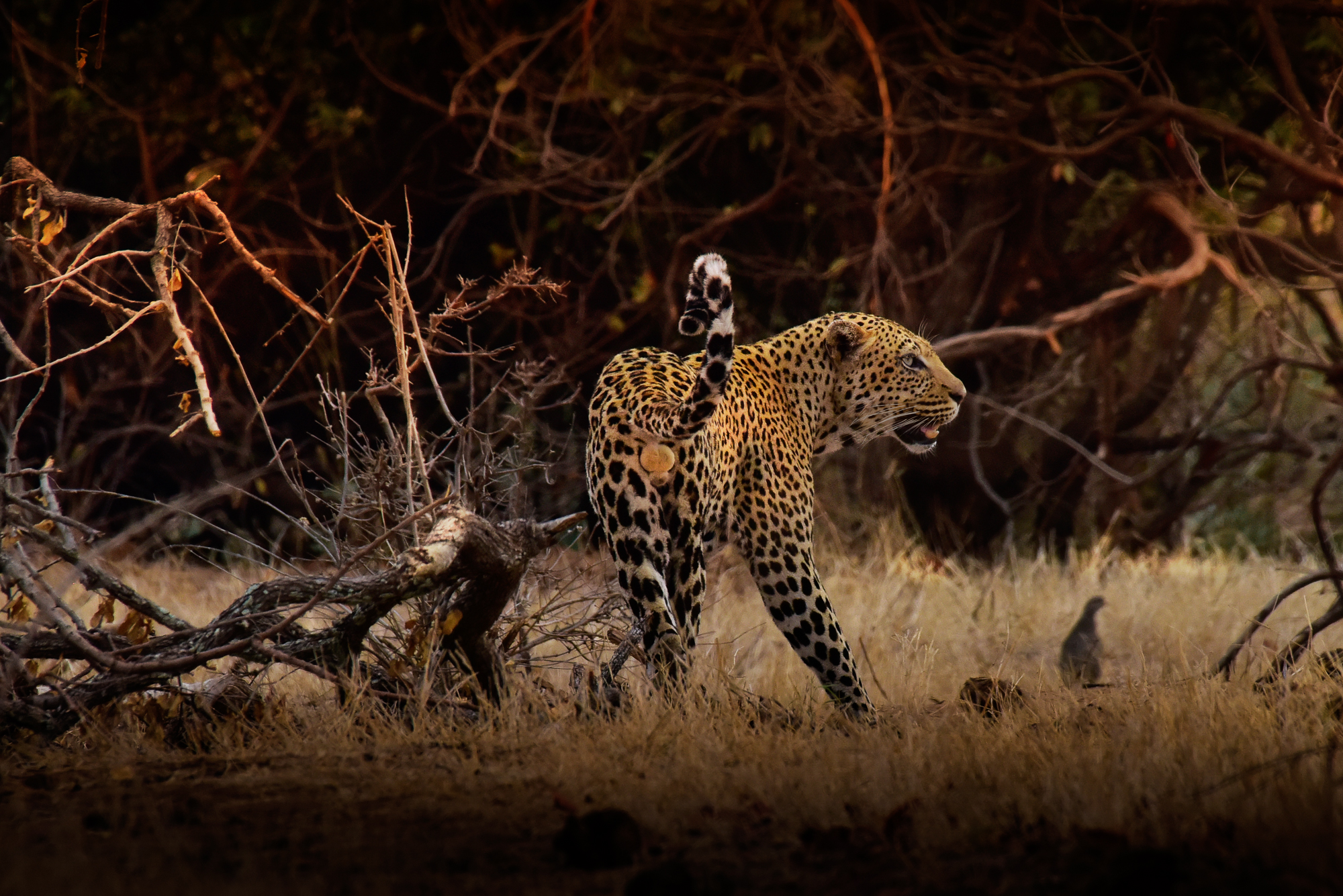
Leopards are solitary predators, and nothing is more dangerous than an old or sick one looking desperately for food.
The leopard retreated, and they realized the blood was from Gavin’s hand, pouring from a deep gash probably inflicted by the leopard’s claw. Jill used a pillowslip over his hand. The experience, which lasted about a minute, understandably shook them, and they considered their options. They had to get into the truck somehow. They thought of pulling in the ladder; as Gavin opened the gauze, the leopard reappeared and started attacking the bottom. Eventually, they got the ladder in and zipped up the tent. Gavin opened the tent on the opposite side, slipped down the ladder, and managed to enter the vehicle. He drove to the next camp about 3 kilometers away, yelling at Jill in the RTT to see if she was okay and to shine down the road to ensure the leopard was not following. Three kilometers is a long way on a sandy dune road. After nursing Gavin’s wounded hand, they drove back to the camp and saw the highly compromised leopard in the headlights—before he ducked away and vanished.
“At the camp, sitting in the Hilux talking about the incident, we realized how lucky we had been. We were suffering from post-traumatic stress, so I quickly jumped out and retrieved a bottle of whisky, which we sipped neat to calm our jangled nerves. What a night.” Gavin continued, “It is an unexpected, terrifying, and horrific experience that takes time to assimilate. However, one must accept that visiting the wild is a risky activity. I have been going to Mabua for 43 years, almost every year and sometimes two or three times yearly, so I regard myself as reasonably experienced. I have always carried an axe and a diver’s knife into the tent, but the recent acquisition of a rooftop tent has made me feel safer, so I have let this practice slip. Big mistake.”
I showed Gavin’s somewhat shaky image of the leopard to my ranger friend, and he concurred that it was a reasonably young adult, albeit very thin. Many theories were flying around on social media, but the fact remains that Gavin and Jill followed the guidelines correctly. We are privileged to have access to these precious tracks of land on an overpopulated earth. Still, it is imperative to remember that we are the temporary tenants, and the animals are the landlords. Respect the roles.
While writing this, news came through that a US tourist had tragically died from an elephant attack while on safari. The safari company is a well-known and reputable operation, but you should never forget you are in the wild.
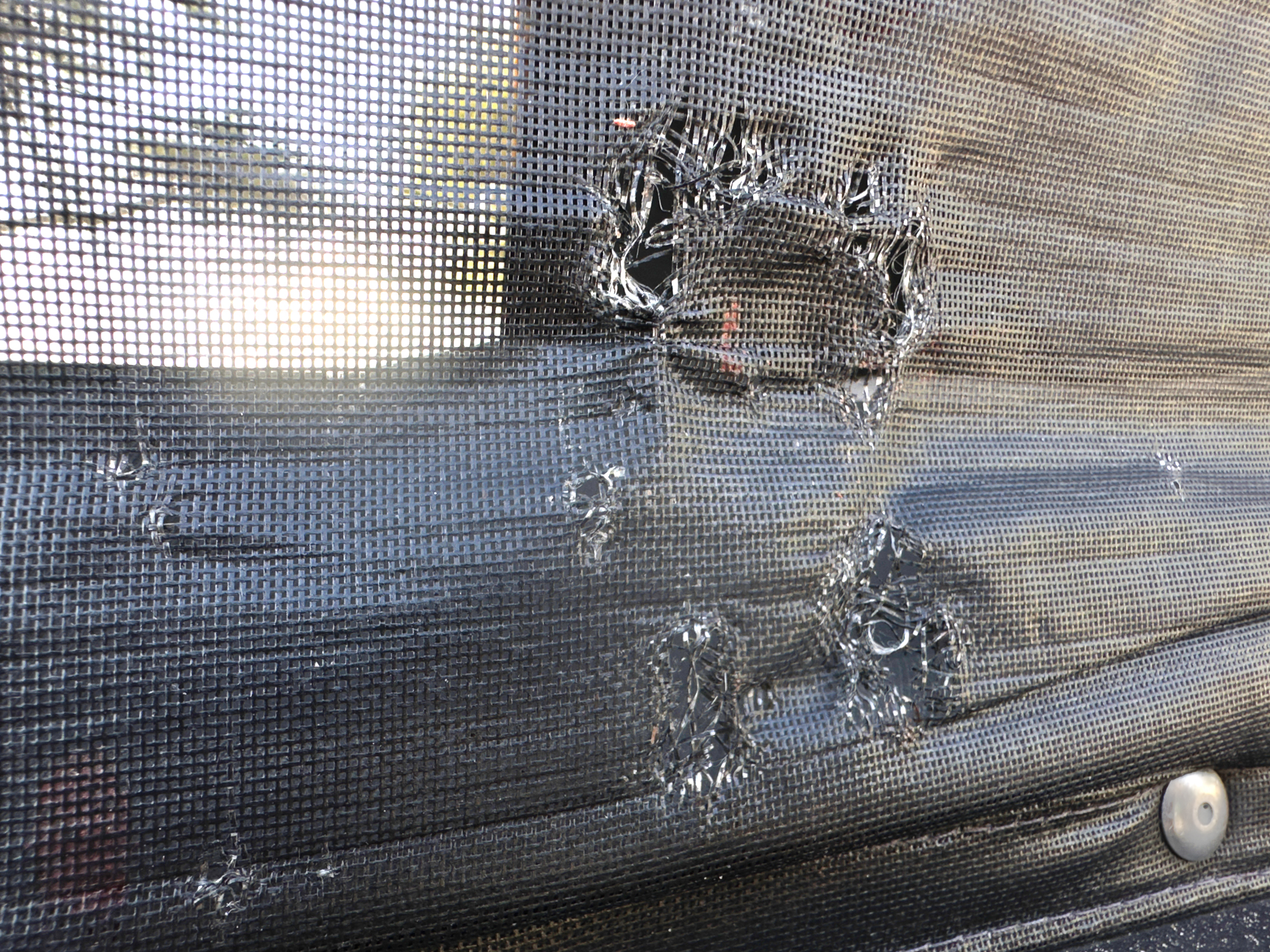
Never underestimate the strength of a leopard—this is the clawed damage to the zipped front of Gavin’s rooftop tent.
General Camping Guidelines
Camp in designated campsites when possible and familiarise yourself with the layout. The tighter you keep your camp, the better, with your vehicle parked adjacent to your shelter. Campsites may have thick bush surrounding them (be vigilant day or night for unexpected visitors) or in open semi-desert areas. Convoy groups should park in a circle. Stay within the camp perimeter at night.
Keep tent (whether ground or rooftop) doors and windows closed even on hot nights. Sturdy canvas is best for ground tents; flimsy tent material is not recommended. A solid, uniform shape does not attract animals. Once you exit the tent or if silhouettes can be seen within shelters, you are vulnerable to predators. Never sleep in the open.
There are two schools of thought on camp lighting: keep your camp well-lit or put a minimal solar light on the ground near your shelter entrance (my preference). When employing bright lights, our eyes cannot adjust to the dark areas outside the light perimeter where something might be hiding, so I like to keep the light as low as possible.
Have at least one powerful spotlight. Each person should also have a good quality and reliable torch with replacement batteries. The headlamp type is helpful and leaves both hands free. There are also powerful LED hand-held torches, some of which can focus the beam on a spotlight. Note that a predator’s eyes will reflect light so the keen observer can easily see them.
Carefully inspect the vicinity when anyone goes to the shower or restroom, which should not be too far from the central region of the camp.
Keep a canister of fog-type pepper spray and a small air horn or a whistle (to create a startling noise if needed) nearby at all times, especially when going to the restroom, cooking, or using the shower.
Park visitors are not allowed to carry firearms. Some (such as Gavin) feel more comfortable keeping an axe, knife, or spade on hand within the shelter in case of emergency.
If braaing (barbequing) meat, do it early before the sun goes down—predators have a well-developed sense of smell. Wrap bones from the meal and store them in your vehicle or, even better, in your camping fridge until you can dispose of them properly. Never bury or leave them around the fire—a sure way to attract unwanted attention.
Pack all food and refuse away in your vehicle overnight. Never leave food or store food outside or in your tent; fruit is especially attractive to elephants. Hyenas will also remove closed cooler boxes out in the open.
Never leave water out. Animals get habituated and will come looking for it.
Avoid consuming too much alcohol as it impairs judgment and also increases the need to visit the restroom after dark.
If camping near water, look out for crocodiles and hippos who feed at night.
If elephants come through the camp, do not approach or make noise—they will leave eventually.
While game driving, keep a respectful distance from the wildlife.
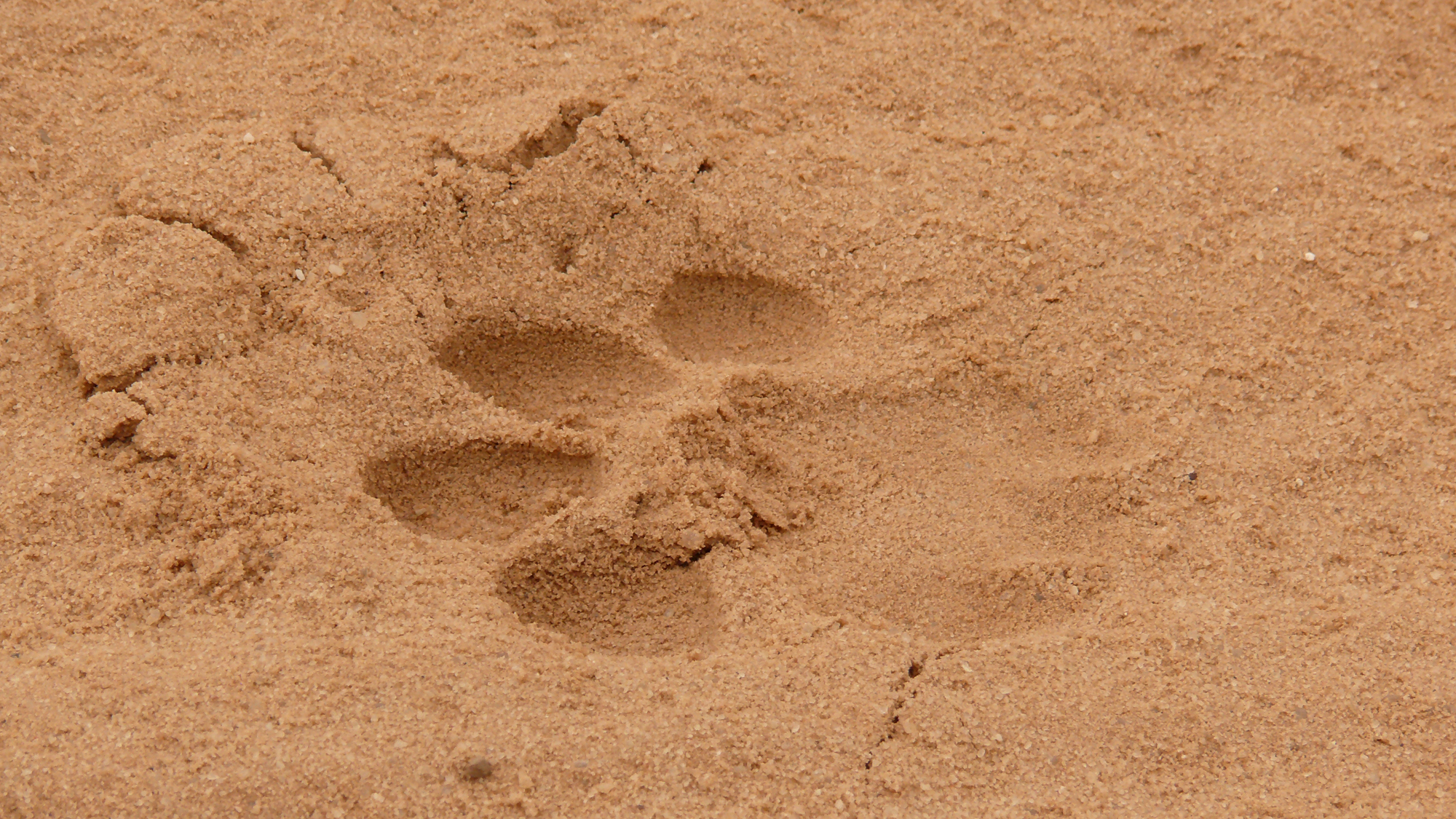
The track of a lion’s paw is unmistakable and exciting, especially waking up to them around your tent the following morning.
Editor’s Note: This article was originally published in Overland Journal’s Winter 2024 Issue.
Read more: OV Routes:: South Africa’s Namakwa 4×4 Eco Trail
Our No Compromise Clause: We do not accept advertorial content or allow advertising to influence our coverage, and our contributors are guaranteed editorial independence. Overland International may earn a small commission from affiliate links included in this article. We appreciate your support.


